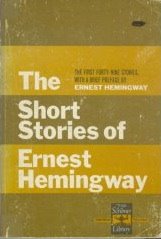 It's been said to be featured in The Mona Lisa. The dimensions of the Great Pyramid supposedly hold this value. Great symphonies can be described by this one number.
It's been said to be featured in The Mona Lisa. The dimensions of the Great Pyramid supposedly hold this value. Great symphonies can be described by this one number.Phi.
1.61803... to infinity. The motherload of irrational numbers. More mysterious than Pi. And this book, The Golden Ratio, explains it all. Its history, how it was discovered, its supposed uses, and false claims to its use in several of the most wondrous monuments and works of art.
I love math. I love numbers. I love the interaction and how they interpret the world so wondrously, and so I love books that explain their presence.
The Golden Ratio was not what I expected it would be. It surpassed my expectations, but for many reasons which may not seem immediately clear. Livio deduces that pretty much all ancient structures and paintings supposedly constructed out of the mysterious Phi are false, that Phi was not discovered, that it's mainly due to the inherent construction that it's number comes up (what he calls number juggling, or making numbers work for you arbitrarily). He basically proves there is no mysterious connection of Da Vinci, the Great Pyramid, Ancient Greece, or most art and music to the Golden Ratio due to unsubstantial evidence. Either the artist or the designer had no access to the Golden Number, or the number's existence is there because of some fancy number juggling.
I respect that. It takes the mysteriousness out of the number. It makes it more believable. And, because it does show up all over nature (in mollusk shells, the space and rotation of tree branches, the shape of galaxies, anything explained by a Fibonnaci sequence, and any type of fractal) even more wondrous.
Livio breaks down myths about this numbers to support its fantastic capabilities. He also gets into some interesting philosophical discussions inspired by this number about whether math is the ultimate "language of the cosmos" or if it is simply an invention of man and so a mediocre tool that is only the tip of the iceberg of what is really going on. It's interesting reading, and really quite insightful.
Math buffs, history buffs, and knowledge mongrels will find this book fascinating. I suggest picking it up if you have a chance. And when you do, ask yourself, what's your favorite number?
Phi's mine.


1 comment:
I too love numbers. See my number-based paintings at http://www.quantumconnectionsart.blogspot.com The Livio book is by far the best...makes it so easy to understand. It was one of the springboards for my latest body of work...all on boards that have Fibonacci number dimensions. Would you be interested in chatting about numbers? If so, email me at Marion497@gmail.com
Post a Comment